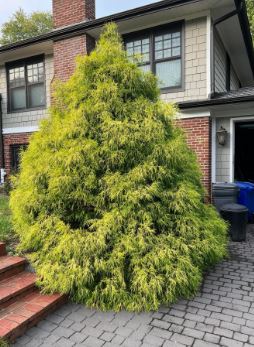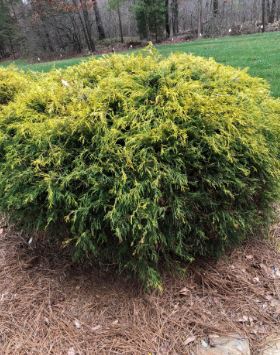Pruning your Gold Mop Cypress is an essential task to ensure its vitality and aesthetic appeal. This comprehensive guide covers various aspects of Gold Mop Cypress pruning, from the basic techniques to specific scenarios and care tips.
Basics of Gold Mop Cypress Pruning
Pruning plays a crucial role in maintaining the health and appearance of your Gold Mop Cypress. Regular pruning helps in shaping the plant, removing dead or diseased branches, and promoting new growth. It is essential to dispel common misconceptions surrounding pruning, ensuring you approach this task with confidence.
Importance of Pruning Gold Mop Cypress
Pruning is a fundamental aspect of Gold Mop Cypress care. It promotes air circulation, reduces the risk of diseases, and encourages the development of a robust structure. Proper pruning also enhances sunlight penetration, vital for the photosynthesis process.
Common Pruning Misconceptions
Addressing myths about pruning is crucial to prevent potential harm to your Gold Mop Cypress. Contrary to some beliefs, pruning does not always mean aggressive cutting. Understanding the plant’s specific needs will guide you in implementing a careful and effective pruning strategy.
Pruning Techniques for Gold Mop Cypress

Table of Contents
To maintain the health and appearance of your Gold Mop Cypress, it’s important to master proper pruning techniques. Using the right tools and following correct procedures will ensure a successful outcome.
Step-by-Step Guide to Pruning Gold Mop Cypress
- Inspect the Cypress: Begin by closely examining the Gold Mop Cypress for any signs of dead, damaged, or overgrown branches. Identify areas that need attention.
- Prepare Your Tools: Gather sanitized hand pruners and pruning shears. Ensure they are sharp and free from any contaminants to prevent the spread of diseases.
- Remove Dead or Diseased Branches: Start by cutting back any dead or diseased branches to the main stem or trunk. This promotes overall plant health.
- Identify Overgrown Branches: Examine the shrub for overgrown branches that disrupt its natural shape. Identify points inside the shrub where new shoots can emerge.
- Careful Cutting: Trim overgrown branches just above a set of leaves inside the shrub. Avoid cutting too close to the main stem, ensuring new shoots can develop.
Tools Required for Pruning Gold Mop Cypress
| Tool | Purpose |
|---|---|
| Hand Pruners | Precise cutting of smaller branches |
| Pruning Shears | Trimming larger branches and maintaining shape |
| Loppers | Cutting thicker branches that hand pruners can’t handle |
| Gloves | Protecting hands from scratches and irritants |
| Rubbing Alcohol | Sanitizing pruning tools to prevent the spread of diseases |
Best Time to Prune Gold Mop Cypress

Timing is crucial when it comes to pruning your Gold Mop Cypress. Choosing the right season ensures minimal stress on the plant and encourages healthy regrowth.
Optimal Pruning Time
The best time to prune Gold Mop Cypress is at the end of winter or in early spring. This period aligns with the plant’s natural growth cycle, allowing it to recover swiftly.
Seasonal Considerations
- Spring Pruning: Ideal for shaping and rejuvenating the plant after winter dormancy.
- Early Summer Pruning: Permissible for corrective pruning, but avoid late summer pruning to prevent new growth from being affected by the approaching cold.
Dealing with Overgrowth: A Step-by-Step Approach
Overgrown Gold Mop Cypress can compromise its aesthetic appeal and health. Implementing a systematic approach to address overgrowth ensures a balanced and visually pleasing result.
Identifying Overgrown Branches
- Evaluate Outward Growth: Look for branches that extend significantly beyond the natural form of the shrub.
- Check for Disproportionate Growth: Identify branches that disrupt the overall symmetry of the Gold Mop Cypress.
Step-by-Step Overgrowth Pruning
- Determine Interior Growth Points: Locate sets of leaves growing inside the shrub to cut overgrown branches just above these points.
- Remove Overgrown Branches: Use sanitized hand pruners to carefully remove identified overgrown branches.
Shearing Gold Mop Cypress: Pros, Cons, and Techniques
Shearing is a common practice for shaping shrubs, but it comes with both advantages and disadvantages. Understanding the intricacies of shearing ensures you make informed decisions about the appearance of your Gold Mop Cypress.
Pros and Cons of Shearing
- Pros:
- Provides a quick, uniform appearance.
- Controls the size of the shrub efficiently.
- Cons:
- May lead to the loss of the shrub’s natural, shaggy look.
- Can result in unattractive stubs that take time to cover with new growth.
Proper Shearing Techniques
- Light Shearing: If choosing to shear, do it lightly to preserve the natural shape of Gold Mop Cypress.
- Avoiding Overcutting: Be cautious not to cut beyond healthy growth, preventing harm to the branches.
Can You Cut the Top Off a Cypress Tree?
There are instances where cutting the top off a Cypress tree becomes necessary. However, this drastic measure requires careful consideration of potential risks and benefits.
Exploring Drastic Pruning Measures
- Identifying Situations Requiring Top Cutting:
- Overgrown trees affecting nearby structures.
- Unmanageable height compromising aesthetics.
- Risks and Benefits:
- Risks: Stress to the tree, potential shock, and uneven regrowth.
- Benefits: Immediate size reduction, promoting healthier growth.
Potential Risks and Benefits
- Risks of Top Cutting:
- Shock to the tree, leading to potential decline.
- Uneven regrowth that may affect the tree’s natural shape.
- Benefits of Top Cutting:
- Immediate reduction in size, addressing space constraints.
- Encourages healthier growth and rejuvenation in certain scenarios.
Gold Mop Cypress Size Management and Height Considerations
Controlling the size of your Gold Mop Cypress is essential for maintaining a well-proportioned garden or landscape. Understanding the expected height at maturity guides your planting decisions.
Managing Size
- Regular Pruning: Consistent pruning helps control the overall size of the shrub.
- Choosing Suitable Varieties: Opt for dwarf cultivars if space is limited, ensuring they align with your desired size.
Expected Height at Maturity
- Gold Thread Cypress Cultivars:
- Range from 3 feet (e.g., Sungold) to 20 feet (e.g., Gold Thread).
- Consider the specific cultivar’s growth pattern when planning your landscape.
- Golden Mop Cypress Varieties:
- Dwarf varieties like Golden Charm may reach 6 feet.
- Provide adequate space to accommodate potential growth.
Addressing Browning Issues in Gold Mop Cypress
Browning in Gold Mop Cypress can be indicative of various issues, ranging from environmental stress to diseases. Identifying the causes and implementing remedial measures are essential for restoring the plant’s vibrant appearance.
Understanding Browning Causes
- Environmental Stressors:
- Inadequate watering or excessive drought conditions.
- Exposure to harsh winter winds or extreme temperatures.
- Disease Factors:
- Fungal infections or pests affecting foliage health.
- Soil-borne diseases impacting root health.
Remedial Measures
- Adjusting Watering Practices:
- Ensure consistent moisture levels, especially during dry periods.
- Mulch around the base to retain soil moisture.
- Addressing Diseases:
- Apply fungicides as per manufacturer recommendations.
- Remove affected foliage to prevent disease spread.
Propagating Gold Mop Cypress: Step-by-Step Guide
Propagating your Gold Mop Cypress allows you to create new plants, expanding its presence in your garden. Following a step-by-step guide enhances your success in this propagation process.
How to Propagate Gold Mop Cypress
- Select Healthy Parent Plants:
- Choose mature, disease-free plants for propagation.
- Ensure the parent plant exhibits desirable traits you wish to replicate.
- Propagation Methods:
- Cuttings: Take 6-inch cuttings, removing excess leaves, and dip in rooting hormone.
- Division: Splitting the plant at the root level, ensuring each section has roots attached.
Tips for Successful Propagation
- Optimal Timing:
- Spring is generally the best time for propagation.
- Ensure the chosen method aligns with the plant’s natural growth cycle.
- Careful Handling:
- Handle cuttings and divisions with care to avoid damage.
- Provide a conducive environment for root development.
Fertilization and Sun Requirements for Vibrant Gold Mop Cypress
Proper fertilization and sunlight exposure are crucial for the overall health and vibrancy of your Gold Mop Cypress. Understanding the specific needs of the plant ensures optimal growth.
Fertilizing Golden Mop Cypress
- Choosing the Right Fertilizer:
- Use a balanced, slow-release fertilizer to provide essential nutrients.
- Follow manufacturer instructions for application rates.
- Application Timing:
- Apply fertilizer in early spring before the growing season.
- Consider a second application in late spring for sustained nutrition.
Sunlight Needs for Healthy Growth
- Full Sun Exposure:
- Gold Mop Cypress thrives in full sun to partial shade.
- Ensure the plant receives at least 6 hours of direct sunlight daily.
- Positioning in the Landscape:
- Plant in locations where it can benefit from morning sunlight.
- Avoid areas with prolonged afternoon shade to prevent reduced vigor.
Do Deer Like Gold Mop Cypress?
Deer resistance is a crucial consideration for gardeners, especially when cultivating plants like Gold Mop Cypress. Implementing effective strategies can help protect your shrubs from deer browsing.
Assessing Deer Resistance
- Deer Preferences:
- Gold Mop Cypress is generally deer-resistant due to its aromatic foliage.
- Evaluate local deer behavior to gauge potential risks.
- Observing Signs of Deer Damage:
- Chewed or stripped foliage indicates deer presence.
- Regularly inspect your plants for any signs of browsing.
Strategies for Deer Protection
- Use Deer-Repellent Plants:
- Companion planting with deer-resistant species can deter browsing.
- Install physical barriers like fencing for added protection.
- Deer-Repellent Sprays:
- Apply commercial deer repellents on and around Gold Mop Cypress.
- Reapply repellents as directed, especially after rainfall.
Watering Frequency for Healthy Gold Mop Cypress
Proper watering is vital for the health of your Gold Mop Cypress. Understanding the ideal watering frequency and guidelines ensures consistent moisture for optimal growth.
How Often to Water Gold Mop Cypress
- Soil Moisture Monitoring:
- Regularly check soil moisture levels by inserting a finger into the soil.
- Water when the top inch of soil feels dry to the touch.
- Factors Influencing Water Needs:
- Temperature, wind, and soil composition impact water requirements.
- Adjust watering frequency based on seasonal variations.
Watering Guidelines for Optimal Growth
- Deep Watering Technique:
- Water the base of the plant thoroughly to encourage deep root growth.
- Use a slow, steady stream to allow water penetration.
- Mulching for Moisture Retention:
- Apply a layer of organic mulch around the base of Gold Mop Cypress.
- Mulch helps retain soil moisture and suppress weed growth.
Cypress Tree Pruning FAQs: Expert Insights
Addressing frequently asked questions about pruning Cypress trees provides valuable insights for effective plant care. Expert recommendations and practical advice contribute to the overall health of your Gold Mop Cypress.
Answers to Frequently Asked Questions
- When Should I Prune My Cypress Trees?
- Prune at the end of winter or early spring for optimal results.
- Avoid fall pruning to prevent cold damage to new growth.
- What Time of Year Do You Prune Cypress?
- Pruning can occur from spring to midsummer for healthy regrowth.
- Avoid fall and late summer pruning to prevent winter damage.
Expert Insights and Recommendations
- Pruning an Overgrown Cypress Tree:
- Identify overgrown branches and prune them back to promote a balanced form.
- Avoid extensive shearing to maintain the shrub’s natural appearance.
- Can Cypress Be Cut Back?
- Cypress can be cut back, but the extent depends on the specific variety.
- Gradual reduction is preferred to prevent stress on the plant.
Conclusion: Nurturing Your Gold Mop Cypress for Long-Term Beauty
In conclusion, proper pruning and care are fundamental to ensuring the health and longevity of your Gold Mop Cypress. Following the outlined guidelines, understanding the plant’s specific needs, and addressing potential challenges contribute to a vibrant and visually appealing landscape. Remember, each pruning session is an opportunity to enhance the natural beauty of your Gold Mop Cypress while fostering its overall well-being.
© 2024 Lotusmagus.com. All rights reserved. This content is protected by copyright. Visit Lotusmagus.com for more information.

